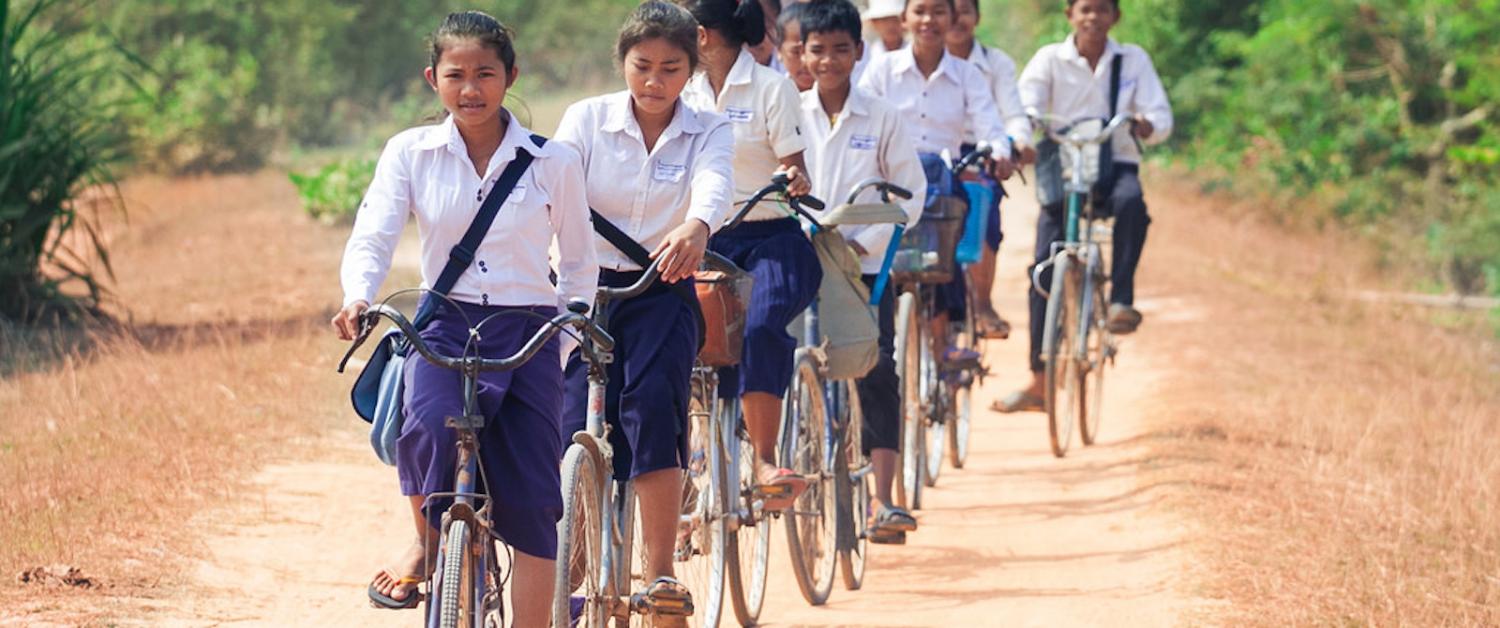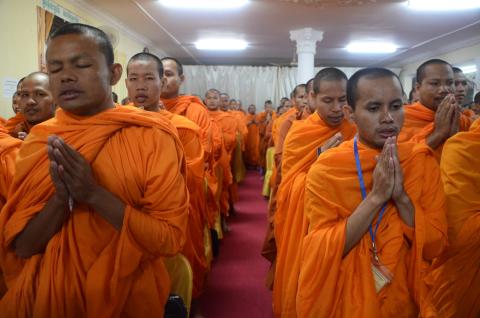Like young people the world over, the youth of Cambodia are glued to their mobile phones. They sit in cafes and bars, order food from street vendors, and weave their motor scooters through Phnom Penh’s frenetic traffic, all the while their thumbs tapping away, texting, gaming, connecting. In the glitzy shopping malls downtown, they queue outside the multiplex cinemas, eager to watch the latest Hollywood blockbuster, juggling buckets of popcorn and oversized cups of soft drink. And at the end of the night, when they need a ride home, they order a Grab – Southeast Asia’s answer to Uber – or use the Cambodian-designed PassApp to order a taxi, which comes in the form of a tuk-tuk.
That the Cambodian youth of today would be so seamlessly integrated into the globalised world of communications, technology, and entertainment would have been unthinkable just one generation ago.
The sheer scale of the atrocities and large numbers of civil parties registered to take part in the cases have meant that the provision of compensation to the victims of the Khmer Rouge is simply not feasible.
January marked 40 years since Vietnamese forces toppled Pol Pot’s murderous Khmer Rouge regime. The Phnom Penh they found was largely deserted, the population forcibly evacuated to the countryside in 1975 as part of a plan to strip Cambodia back its bare bones, to “Year Zero”, and re-establish it as a self-sufficient agrarian utopia.
By 1979, 1.7 million Cambodians, almost a quarter of the country’s population had been murdered or had died of disease, starvation, or exhaustion from forced labour. For those who survived, it was a time marked by violence, extreme deprivation, and overwork. A time followed, not by a return to normality, but by almost a decade of civil war that only came to an end with the dismantling of the Khmer Rouge in 1998.
It was not until five years later that the government of Cambodia in conjunction with the international community established the Extraordinary Chambers in the Courts of Cambodia (ECCC), a hybrid Cambodian-international court designed to try the leaders most responsible for perpetrating gross violations of human rights during the Khmer Rouge period. By the time the investigations opened in 2007 and the first trial commenced in 2009, 30 years had passed since the end of the era under investigation.
The immediate challenges to the ECCC posed by the sheer passage of time are abundantly clear. The accused individuals are old and infirm, several have died before their cases have been concluded, and one was declared unfit to stand trial due to advanced dementia before her death in 2015. So too, many of the witnesses and civil parties – victims who are permitted to participate in court proceedings and seek collective and moral reparations – are old and frail, their bodies damaged by years of deprivation and their memories fading.
The passage of time has also brought less obvious challenges associated with the provision of reparations to the victims of the Khmer Rouge. Reparations are measures designed to repair damage or harm unjustly inflicted on individuals, groups, or societies. A key element of transitional justice, the right of victims to seek reparations is established in all the major instruments of international human rights law. These instruments make clear that in cases where the permanent nature of a human rights violation makes restitution impossible – for example, where victims have been murdered or rendered permanently disabled – reparations ought to take the form of compensation, rehabilitation, guarantees of non-repetition, and satisfaction.
In the case of Cambodia, the sheer scale of the atrocities and large numbers of civil parties registered to take part in the cases before the ECCC have meant that the provision of compensation to the victims of the Khmer Rouge is simply not feasible. Instead, the court’s reparations program has focused on satisfaction (conceived as the acknowledgement of wrongdoing), rehabilitation in the form of psychological support services, and guarantees of non-repetition.
With around 70% of Cambodia’s population under the age of 30, acknowledging the wrongs of the past and providing guarantees of non-repetition has meant finding ways to engage with a generation born after the end of the civil war. For the non-governmental organisations (NGOs) and civil society organisations (CSOs) charged with implementing the ECCC’s reparations projects, it has meant finding ways to educate young Cambodians about the experiences of their parents’ and grandparents’ generations, to acknowledge their suffering, and to come to grips with Cambodia’s troubled history.
Much of this effort has been centred on designing and implementing changes to Cambodia’s school curriculum, producing new history textbooks detailing the Khmer Rouge period, and providing training to high school history teachers. But new textbooks only go so far. As the director of one of the most prominent NGOs in Cambodia told me on a recent visit to Phnom Penh, most young people are lucky to read a single book each year. What they want is information at their fingertips, information that can be read on a smartphone.
For the historians, filmmakers and IT specialists at the Bophana Centre, the way to get Cambodia’s youth engaged with their country’s history and to foster intergenerational dialogue and understanding was obvious: they designed an app. AppLearning on Khmer Rouge History aims to educate young people about Cambodia’s history and encourage youth to talk to their parents about their experiences. Used as a history teaching tool in schools, since its launch in the middle of 2017 the app has reached 60,000 students and achieved 45,000 downloads. Although it initially presented eight chapters on Khmer Rouge history, it now includes four more chapters, along with the direct testimonies of survivors.
Funded by the Rei Foundation and the EU, the App was officially endorsed as a reparations project by the ECCC in the judgment on Case 002/02 in November 2018. The hope, of its donors and developers alike, is that the app will not only help the victims and survivors of the Khmer Rouge period by ensuring that the younger generations understand their experiences, but that greater understanding of the past will prevent a similar tragedy in the future.

